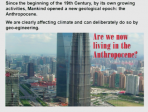 00:23:00
00:23:00
Atmospheric Chemistry and Climate in the Anthropocene
Despite their relatively small mass, 10% of the earth biosphere as a whole, generations of ambitious ‘homo sapiens’ have already played a major and increasing role in changing basic properties of the atmosphere and the earth’s surface. Human ....
More details | Watch now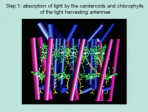 00:30:00
00:30:00
Photosynthesis, Biomass, Biofuels: Conversion Efficiencies and Consequences
It is generally accepted that the global warming, which we undoubtedly observe, is the result of an increased concentration of greenhouse gases like carbon dioxide and methane in the atmosphere. Within this scenario it is evident that we have to re....
More details | Watch now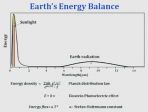 00:34:00
00:34:00
The Science and Policy of Climate Change
Climate change is the most serious environmental challenge facing society in the 21st century. The basic science is clear: the International Panel on Climate Change concluded that there is more than 90% probability that human activities are causing....
More details | Watch now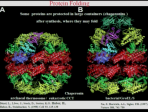 00:35:00
00:35:00
Proteasome and DegP Protease, Mechanisms and Drug Design
Within cells or subcellular compartments, mis-folded and/or short-lived regulatory proteins are degraded by protease machines, cage-forming multi-subunit assemblages, the proteasome and HtrA/DegP. They are essential components in very complex regul....
More details | Watch now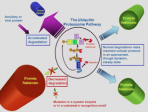 00:29:00
00:29:00
The Ubiquitin Proteolytic System as a Novel Drug Development Platform
Between the 50s and 80s, most studies in biomedicine focused on the central dogma - the translation of the information coded by DNA to RNA and proteins. Protein degradation was a neglected area, considered to be a non-specific, dead-end process. ....
More details | Watch now 00:28:00
00:28:00
Roles of the Ubiquitin System in Health and Disease
The selective degradation of many short-lived proteins in eukaryotic cells is carried out by the ubiquitin-mediated proteolytic system. In this pathway, proteins are targeted for degradation by covalent ligation to ubiquitin, a highly conserved sma....
More details | Watch now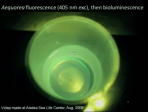 00:33:00
00:33:00
Engineering Molecules for Fun, Profit, and Clinical Relevance
Molecules to observe and manipulate biological systems and disease processes can be devised by a variety of strategies, ranging from pure chemical design and total synthesis to genome mining and high-throughput directed evolution. Examples of both ....
More details | Watch now 00:36:00
00:36:00
Magical Power of d-Block Transition Metals: Past, Present and Future
Until recently, most of the 24 d-block transition metals had been used primarily as useful materials for (i) construction and also as tools and containers, etc., (Ti, Zr, Fe and their alloys with V, Cr, Mn, Co, Ni, etc.), (ii) precious and ornamental....
More details | Watch now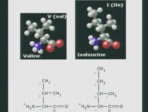 00:40:00
00:40:00
Glimpses of Chemical Wizardry
In an evangelical spirit, three vignettes will be presented that have the character of molecular parables: stories with lessons that transcend the specific details.(1) How knowledge of the orientation of a methyl group with respect to a neighboring d....
More details | Watch now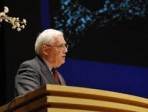 00:32:00
00:32:00
The Fuel of Life
The lecture will be devoted to the topic of how the biological world supplies itself with energy to make biology work, and what medical consequences ensue when the energy supply chain in our bodies is damaged or defective. We derive our energy from....
More details | Watch now 00:30:00
00:30:00
Catalysis at Surfaces: From Atoms to Complexity
Catalysis by solid surfaces is, among others, of importance for the chemical industry (e.g. the Haber-Bosch process) as well as for environmental chemistry (car exhaust catalyst). Surface physical techniques enable investigation of the underlying e....
More details | Watch now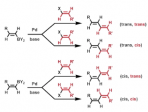 00:30:00
00:30:00
Cross-Coupling Reactions of Organoboranes: An Easy Way for Carbon-Carbon Bonding
The palladium-catalyzed cross-coupling reaction between different types of organoboron compounds and various organic halides in the presence of base provides a powerful and general methodology for the formation of carbon-carbon bonds. The (sp3)C-B ....
More details | Watch now
